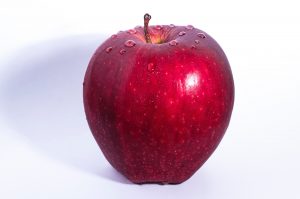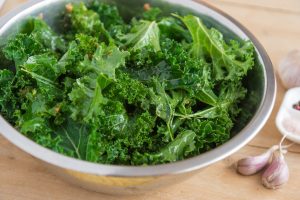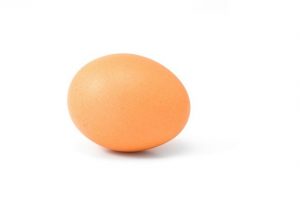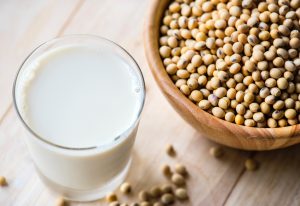As I grew up, I always thought that a serving was the amount of food I put on my plate. Although this is somewhat true, the nutrition in our food is based on the serving sizes we eat. If only the nutrition of 1 pizza slice equaled the nutrition of 3 slices I serve myself!
To help standardize nutrition information about our food, the USDA has standard serving sizes (also called portion sizes). This is particularly helpful when reviewing your custom meal plans created by your Nuleeu Registered Dietitian Nutritionist or when comparing the Nutrition Facts labels of different foods. Now that we’ve reviewed MyPlate in our previous blog post, we’re going to walk through each food group and review common serving sizes found in each category. Some of these servings may come as a surprise to you! You’ll also find examples of how many servings someone may eat when following MyPlate guidelines, based on an 1800-calorie diet.
Fruit
Fruit servings are most often measured in cups. Picture a household measuring cup that you might use in the kitchen. Sometimes this is helpful to estimate fruit portions like grapes or raisins. For solids fruits, picture a tennis ball, which is equal to a medium piece of fruit or 1-cup serving. Below are some examples of 1-cup equivalent portion sizes of different fruits:
 Applesauce= 1 cup
Applesauce= 1 cup- Dried fruits (prunes, raisins, etc.)= 1/2 cup
- Grapes= 1 cup or 32 grapes
- Orange= 1 large orange
- Pineapple= 1 cup chunks, slices, etc.
- Plum= 3 medium or 2 large plums
- 100% Fruit Juice= 1 cup
For people following an 1800-calorie meal plan following MyPlate guidelines, it’s recommended that they consume 1 1/2 cups of fruit per day.
Vegetables
Fruits and vegetables are identical in their serving size approach. They both measure portions out using cups. Picture a baseball for easy reference when picturing a cup of vegetables. For leafy vegetables, the serving size is equal to 2 cups or 2 baseballs. When leafy greens are cooked, the serving size is 1 cup. Below are some examples of 1-cup equivalent portion sizes of different vegetables:
- B
 eans= 1 cup whole or mashed
eans= 1 cup whole or mashed - Broccoli= 1 cup chopped or 3 long spears
- Celery= 1 cup or 2 large stalks
- Kale= 2 cups raw or 1 cup cooked
- Pepper= 1 cup chopped or 1 large pepper
- Tomato= 1 cup chopped or 1 large tomato
- Tomato juice= 1 cup
- Spinach= 1 cup cooked and 2 cups raw
- Squash= 1 cup cooked, sliced, or diced
- Sweet potato= 1 large sweet potato
For people following an 1800-calorie meal plan following MyPlate guidelines, it’s recommended that they consume 2 1/2 cups of vegetables per day.
Grains
Grains get a little tricky with serving sizes, but we’re here to help! Grain serving sizes are measured in both ounces and cups. Since they are measured by weight and most of us don’t weigh our food, one trick is picturing the size of common items. One slice of sandwich bread the size of a CD cover is equal to a 1-ounce portion. When it comes to cold cereal, rice, barley, quinoa and other grains, think of a baseball as your measurement comparison. For a piece of baked bread such as cornbread, picture a bar of soap as a comparison size. Below are some examples of 1-ounce equivalent portion sizes of different grains:
 Cornbread= 1 small slice (2 1/2” x 1 1/4” x 1. 1/4”)= 1 ounce
Cornbread= 1 small slice (2 1/2” x 1 1/4” x 1. 1/4”)= 1 ounce- English muffin= 1/2 muffin= 1 ounce
- Mini bagel= 1 mini bagel= 1 ounce
- Oatmeal= 1/2 cup cooked= 1 packet oatmeal= 1 ounce
- Popcorn= 3 cups popped= 1 ounce
- Rice or pasta= 1/2 cup cooked= 1 ounce
- Sandwich bread = 1 slice= 1 ounce
- Tortillas= 1 small tortilla (6” diameter)= 1 ounce
For people following an 1800-calorie meal plan following MyPlate guidelines, it’s recommended that they consume 6 ounces of grains per day.
Protein
Protein foods are measured by weight as well. Since most of us aren’t weighing our food, protein foods can get tricky to calculate what’s a serving. Have no fear! We’re here to help you with tips and tricks. Here are some common examples of different protein foods and their ounce equivalents:
 Almonds= 24 almonds= 2 ounces
Almonds= 24 almonds= 2 ounces- Beans= 1/4 cooked beans= 1 ounce
- Chicken= 1 small chicken breast the size of your palm= 3 to 4 ounces
- Egg= 1 egg= 1 ounce
- Egg White= 3 egg whites= 2 ounces
- Peanut butter= 1 tablespoon= 1 ounce
- Pistachios= 24 pistachios= 1 ounce protein equivalent
- Tuna= 1 can of tuna drained= 3 to 4 ounces
- Turkey slice= 1 deli slice= 1 ounce
- Steak= 1 small steak= 3 1/2 to 4 ounces
- Vegetarian bean burger= 1 patty= 2 ounces
For people following an 1800-calorie meal plan following MyPlate guidelines, it’s recommended that they consume 5 ounces of protein per day. This may be surprising for some of us because you may find restaurants serving an 8-ounce steak, which could be equal to the protein you need for one and a half days! Remember, protein itself can be found in all of the food groups, so we don’t have to rely on protein foods themselves to meet our protein needs.
Dairy
Now we’re back to something a little more common. Dairy foods have a mix between foods measured in cups (think baseball again or a measuring cup) such as milk and yogurt, as well as measurements by weight such as cheese. Here are some examples of common dairy foods and their serving size equivalents.
- Al
 mond milk fortified= 1 cup
mond milk fortified= 1 cup - Cheese block= 9-volt battery= 1 cup dairy equivalent
- Cheddar cheese= 2 slices= 1 cup dairy equivalent
- Cottage cheese= 2 cups= 1 cup dairy equivalent
- Evaporated milk= 1/2 cup= 1 cup dairy equivalent
- Frozen yogurt= 1 cup
- Milk= 1 cup
- Shredded cheese= 1/3 cup= 1 cup dairy equivalent
- Soymilk fortified= 1 cup
- Yogurt= 1 regular container (8 ounces)= 1 cup
For people following an 1800-calorie meal plan following MyPlate guidelines, it’s recommended that they consume 3 cups of dairy foods per day.
Everyone has his or her own individual nutrition needs. Some of us need to consume more portions and some of us should consume fewer portions. As you receive your custom Nuleeu meal plan or Nuleeu meal delivery, look at the serving sizes and compare them to the knowledge you now have!
-Elizabeth Fay, MS, RDN, CNSC
References:
1. “All about the Dairy Group.” Choose MyPlate, USDA, 14 Dec. 2018, www.choosemyplate.gov/dairy.
2. “All About the Fruit Group.” Choose MyPlate, USDA, 4 Jan. 2018, www.choosemyplate.gov/fruit.
3. “All about the Grains Group.” Choose MyPlate, USDA, 3 Nov. 2017, www.choosemyplate.gov/grains.
4. “All about the Protein Foods Group.” Choose MyPlate, USDA, 10 Aug. 2018, www.choosemyplate.gov/protein-foods.
5. “All about the Vegetable Group.” Choose MyPlate, USDA, 4 Jan. 2018, www.choosemyplate.gov/vegetables.
6. “MyPlate Graphic Resources.” Choose MyPlate, USDA, 3 Dec. 2018, www.choosemyplate.gov/myplate-graphic-resources.
7. “MyPlate Plan: 1800 Calories, Age 14+.” Choose MyPlate, USDA, 14 Aug. 2018, www.choosemyplate.gov/MyPlatePlan_1800cals_Age14plus.

